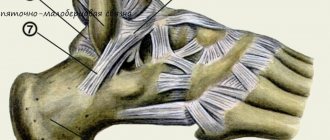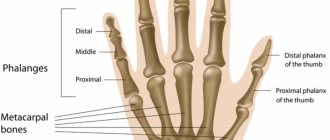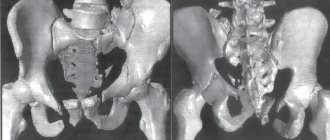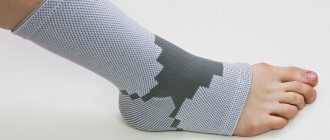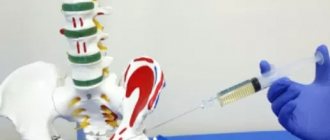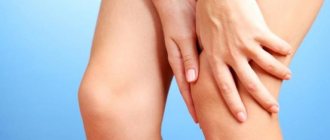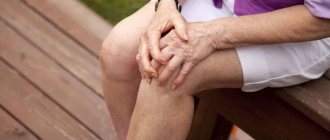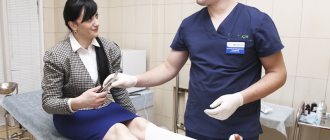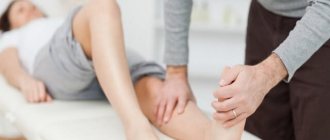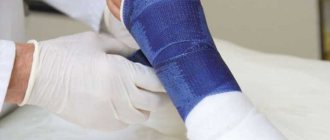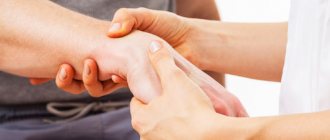An orthosis is a special external bandage that is designed to stabilize the toes or hands in case of injury, the purpose of which is to limit their activity. The finger orthosis is made from various materials, such as plastic, metal, fabric. The product consists of a rigid internal base, which guarantees immobilization of the joint. It contains special fasteners that help fix the finger in the correct position. Externally, the product consists of a soft material that does not cause discomfort and does not cause irritation when worn for a long time.
At the Yusupov Hospital, doctors will select the necessary orthosis taking into account the individual characteristics of the patient.
Description of splints
A splint is a brace that is used after limb fractures, muscle sprains, ligament damage or dislocations. Devices can be made of plaster, plastic or other materials. An arm splint for a fracture is a shortened bandage in the form of a hermetically sealed wide bandage impregnated with plaster.
When it is applied to a broken arm, it takes its shape and then hardens. This provides the necessary fixation for proper bone healing. The splint is much lighter than the usual plaster casts, not so bulky and ideal for children. Can be used for fractures of the upper limbs. This provides the hand with the ability to move.
A splint is an alternative to plaster. Fabric and plastic retainers have now begun to be produced. They are most suitable for fractures of tubular bones; for joints it is better to use ready-made splints. Orthoses are also prescribed for sprains, dislocations, and help cope with pain and inflammation.
Foot support orthosis for foot drop
Foot drop is a pathological condition in which the foot cannot bend upward or downward. Various diseases lead to this condition: stroke, arthritis, neuritis, myopathies, paralysis of the leg muscles, damage to tendons and muscles, and the development of an inflammatory process in the tissues of the lower limb. An orthosis for foot drop helps the foot to be in the anatomically correct position. An orthosis for a drooping foot fixes the ankle, a rigid fixation immobilizes the foot and ankle joint. The load in this case is compensated on the back of the foot. Conditions are created to restore flexion function and roll of the foot.
An orthosis for fixing the foot is used for chronic instability of the ankle joint, injury during which ligaments are torn or sprained, when performing surgical operations in the area of the ligamentous apparatus, and during ankle replacement. An orthosis for a drop foot consists of a splint that secures the ankle at the back and a support pad. The foot support anatomically follows the curve of the foot, the foot is correctly fixed and secured. The drop foot orthosis can be used for a long time, it is lightweight, and can be worn with regular shoes.
Advantages of retainers
Such fixatives have a number of advantages in contrast to plaster fixation. The hand retains the ability to make some movements. This prevents muscle atrophy and disruption of normal joint function in the future. Fasteners:
- Significantly reduce the load on tissues, which helps reduce inflammation and pain.
- There is no itching or discomfort under the bandage if you can wash your limbs.
- Allows you to track the correct fusion of bones using x-rays. Rays pass through solid plaster with difficulty.
- After the fracture has healed, a person can even remove the splint on his own.
- The lightness of the clamp is especially noticeable when fingers are injured. Regular plaster leads to immobilization of adjacent phalanges. As a result, they take a long time to recover. The splint fixes only the broken finger, without causing discomfort to the others or limiting their movements.
The orthosis prevents compression of blood vessels and swelling. Even if they are present, the swollen tissues do not put pressure on the arm.
Toe brace for fracture
Despite the undoubted therapeutic effect and convenience, there are a number of contraindications to orthotics. You should always consult your physician before using this product. At the Yusupov Hospital, traumatologists, surgeons, orthopedists and other specialists can provide qualified assistance. Only a doctor can select the necessary orthosis depending on the patient’s injury or illness. It is not allowed to wear orthoses in the following cases:
- if there are skin diseases at the site where the device is installed;
- inflammatory process at the installation site;
- sutures are not removed after surgery;
- tissues bleed;
- the presence of arthritis of the interphalangeal joints;
- the patient has diabetes mellitus;
- gout;
- obstruction of venous outflow from the place of fixation of the device.
A toe brace is selected individually for each patient by a doctor at the Yusupov Hospital, taking into account the following factors:
- material;
- nature of damage;
- degree of hardness;
- size.
The doctor will select the necessary orthotic design, taking into account the individual characteristics of the patient. For a finger orthosis, the price varies from 800 rubles to 4,000 rubles. You can make an appointment by calling the Yusupov Hospital.
Areas and features of using clamps
Ready-made fixatives are now being produced. You can buy them at any pharmacy. They are widely used for sprains, dislocations, and pathologies of the musculoskeletal system. For the wrist joint, splints can be used for synovitis, arthritis, carpal tunnel syndrome, and arthrosis.
Retainers are used during heavy physical activity and sports. The devices help maintain the limb in the desired position and protect against additional injuries. At the same time, splints improve blood circulation and have a warming effect.
Ready-made splint fixators
Ready-made arm splints can be purchased at pharmacies. Products have different sizes. If you do not select the right one, the effectiveness of the fixator is significantly reduced. Ready-made retainers can be made from different materials. For example, knitted fabric, neoprene.
For rigid fixation, products made of plastic and metal are recommended. Splints are fixed on the limb using special straps with Velcro or lacing. All clamps have a certain degree of rigidity:
- Soft splints are made from dense elastic materials. The products are designed so that the skin “breathes”. Soft clamps almost do not restrict movement, allowing you to bend the phalanges and wrist. In addition to fixation, they simultaneously perform a light massage and have a warming effect.
- A medium-hard splint works the same way, but has plastic or metal stiffening ribs. They strengthen the grip on the palm side.
- Rigid models are more often used for fractures, when complete immobility of the joints is necessary.
- A splint is one of the types of splint. The device is designed on the same principle, but allows you to increase the distance between the phalanges of the hands. Wearing such a retainer becomes more comfortable. Can secure all fingers at the same time.
Varieties of the latest modern clamps:
- Scotchcast is a bandage made of polymer material. Designed for rigid fixation. Advantages: light weight, airtightness and strength. The device does not allow moisture to pass through.
- Cellacast is made of fiberglass impregnated with polyurethane resin. The advantage is fast hardening, low weight, breathability and moisture resistance. For x-rays, removal of the clamp is not required.
- A turbocast is a thermoplastic splint. It is very convenient to use due to its flexibility and the ability to adjust parameters. The retainer has many holes, which allows the skin to breathe. The splint does not cause allergic reactions, is easily removed, and is resistant to moisture.
Fixators are contraindicated in the presence of skin lesions, ulcers, erosions, and irritations. Do not use on the site of inflamed sutures after surgery, weak scarring or bleeding.
Attention! Splints are not used for certain types of diabetes, circulatory problems or gout.
Big toe brace
Thumb orthoses come in a variety of designs. There are glove-type designs; they are worn on the hand and thus stabilize the phalanx of the first finger and hand. Other types of models only hold the joint in the correct position. Also, various orthoses are divided according to the degree of stabilization. There are three types of clamps:
- hard. The device acts like a plaster cast. Although the finger is virtually immobilized, wearing a rigid orthosis for a long time does not cause muscle atrophy;
- soft. For the manufacture of this type of orthoses, elastic and dense material is used. Such products only slightly limit the mobility of the joint. They warm and easily massage the damaged area. This type of orthosis is recommended to be worn throughout the rehabilitation period to protect the joint of the injured finger from unnecessary stress;
- semi-rigid. This type of orthosis limits mobility to a fairly significant extent and takes on most of the load. They inhibit the development of pathological processes during the rapid course of the disease.
Also, orthoses for the ring finger are divided according to the principle of action. for fixing, correcting, compensating and unloading. Fixing orthoses are used to limit movements, unloading ones to reduce the load on an injured joint, corrective ones to correct joint deformation, compensatory ones to support a limb and replace a diseased joint. Doctors at the Yusupov Hospital prescribe an orthosis depending on the characteristics of the injury or the course of the disease in order to ensure the highest quality therapeutic effect.
Also, orthoses for finger fixation are preventive, therapeutic, rehabilitative and improve the quality of life. During the period of post-traumatic rehabilitation, therapeutic and rehabilitation orthoses are used. Preventative bandages are used by people who have chronic illnesses to protect diseased tissues from damage and relieve stress. Orthoses that improve the quality of life for patients suffering from severe congenital diseases are made to order. The doctor will determine which finger orthosis to buy after a consultation.
Using a rigid-elastic orthosis, the joints of the phalanges of the hand are firmly fixed. In a situation with a fracture, the affected area is compressed using the compression effect, fragments of a torn tendon or bone fragments are compared, and the process of healing of damaged tissues is significantly accelerated. Thanks to this orthosis, inflammatory processes subside and pain is reduced. The device protects postoperative sutures from external influences. The device has the property of immobilization, as it consists of durable structures that allow you to immobilize the site of ligament rupture or bone fracture. Otherwise, mobility will lead to displacement and increase the healing time of damaged tissue.
Variety of ready-made splints
The most popular finger splint. It is much easier for them to choose the required size. Fixators can be used for all types of joint injuries and deformities, as well as after surgical operations. The most effective devices are produced under the following brands:
- “Or;
- "Ortex";
- "Orlette."
Finger splints are most often used for sprains, treatment of chronic pathologies, and during rehabilitation. Devices are often used in sports to prevent injury to joints.
Ready-made retainers perform the same functions as plaster splints, due to the rigid elements in the design and the ability to choose the right size. If necessary, the devices are reinforced with an additional tire. Such splints are used for fractures. Types of hand clamps:
- A finger splint is a metal strip, upholstered on the inside with soft foam material. The latch reliably blocks the phalanx on both sides, completely immobilizing it. It is possible to regulate the density of immobilization, the position of the finger, and the force of pressure on it. Thanks to correctly distributed load, swelling is prevented and relieved.
- The splint for the thumb has a wide range of models. The fixator is available only to immobilize the joint or simultaneously covers the wrist. The immobilizer can have different shapes and degrees of rigidity, and at the same time provides micromassage. The inside is made of neoprene, the outside is made of polyamide. The stiffeners are made of stainless steel. At the same time it covers the wrist and is fixed with Velcro.
- The wrist splint comes in different sizes and can be adjusted. Usually made in the form of two parts of dense plastic. Secure with Velcro straps. A children's model range is also produced separately. They have their own size scale. Children's splints are painted in different colors to reduce the negative psychological effect.
Any splint for the hand or fingers (type, purpose, stiffness) is initially selected during consultation with a doctor. The required size is selected directly at the pharmacy or medical equipment stores. Before purchasing, you need to try on the retainer so that it fits comfortably on the limb.
You can buy splints in orthopedic Moscow salons. For example, “Health” is located on Grokholsky lane, 10/5. The ORTEKA salon is located on Zeleny Prospekt, 79A or Shelkovskoe Highway, 56/72. The approximate cost of splints is from 103 rubles.
Finger brace
In the hand, the most mobile is the first finger. The thumb performs many functions, so most often it is the one that is injured. This could be sprains, dislocations, bruises, fractures, chronic joint diseases.
At the Yusupov Hospital, doctors who specialize in traumatology and orthopedics welcome the use of a thumb orthosis for the treatment of pathological processes and injuries. The use of orthotic structures always gives positive results.
The use of an orthosis is prescribed for the following pathologies and diseases:
- injuries of interphalangeal joints;
- fractures of the bones of the phalanges of the fingers;
- avulsions or ruptures of muscle tendons;
- ligament damage;
- serious bruises and dislocations;
- joint pain;
- arthrosis, rhizarthrosis and arthritis;
- inflammation of tendons and ligaments;
- pathological diseases and conditions;
- recovery period after surgery and injuries.
